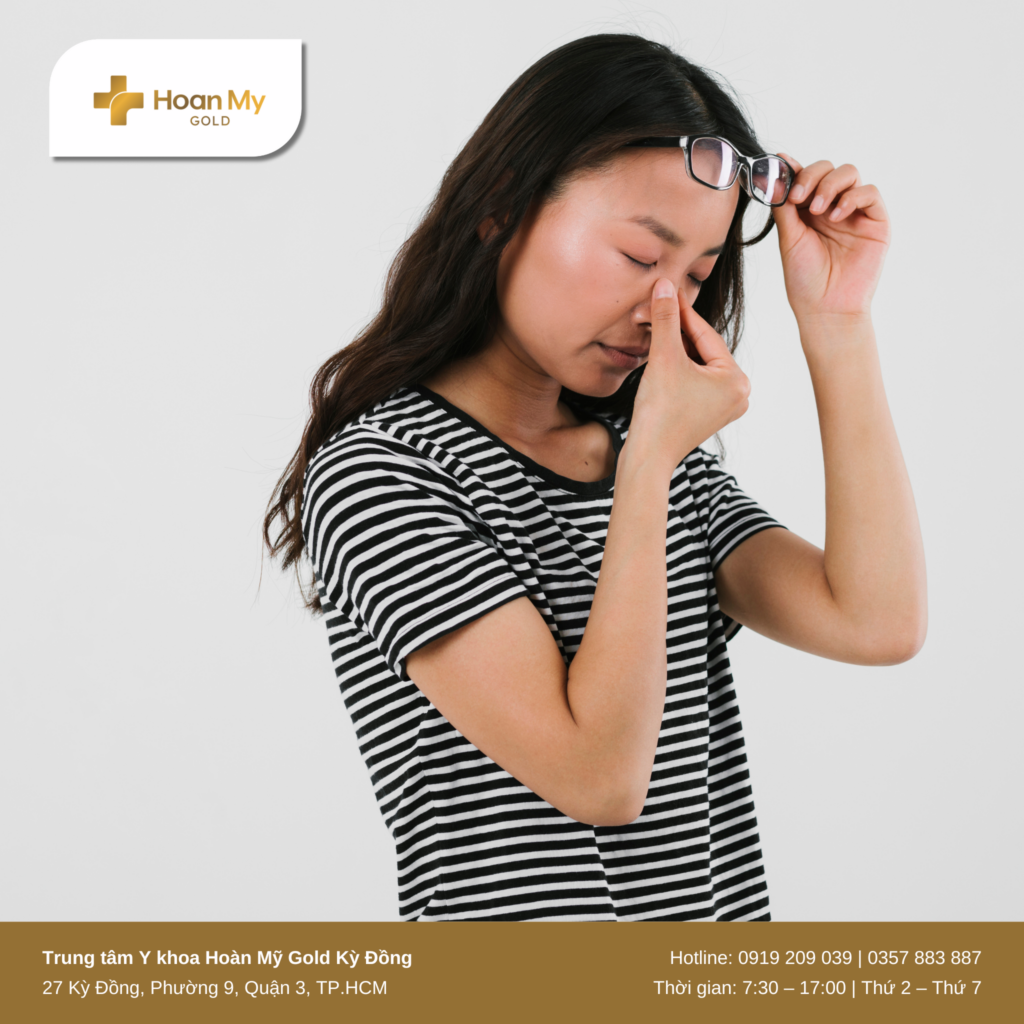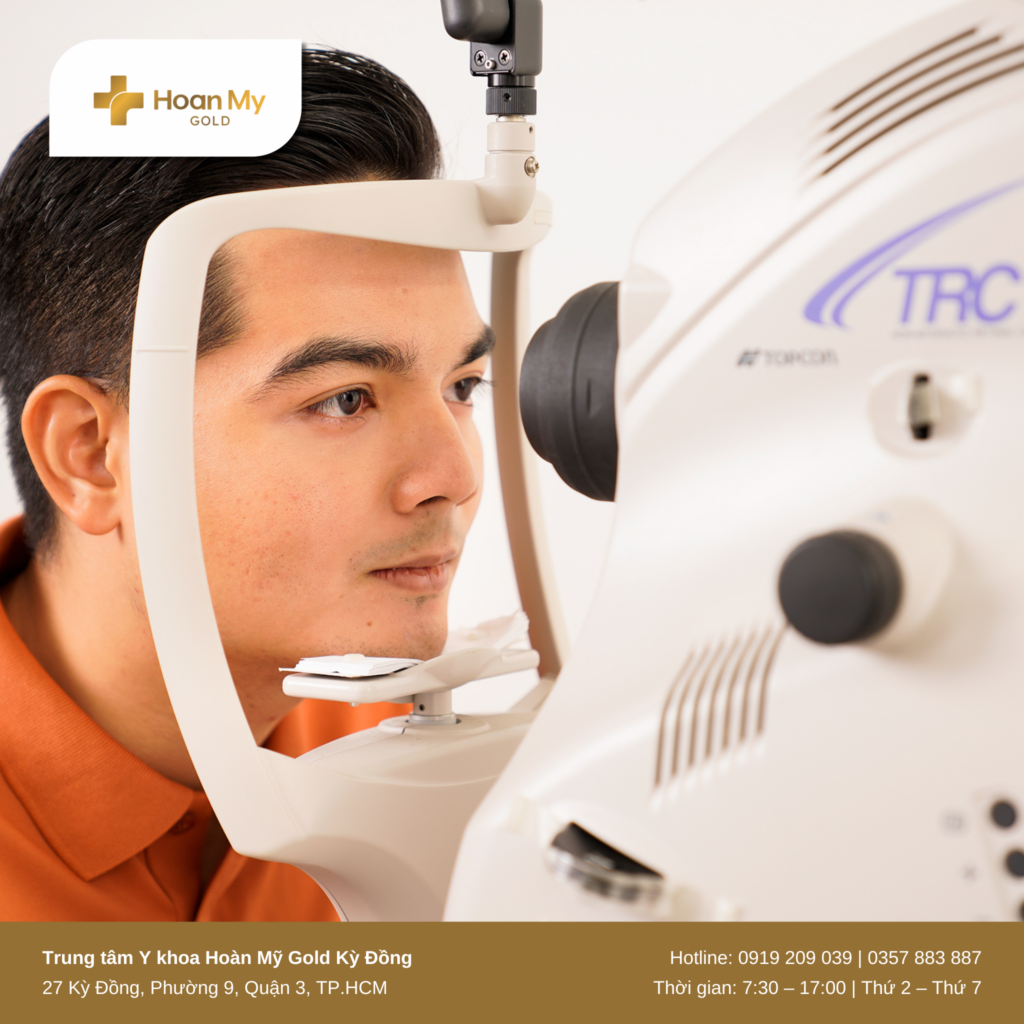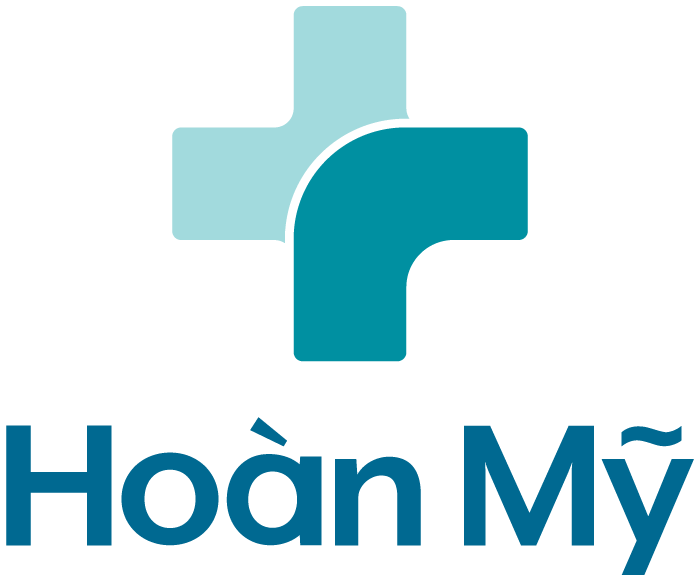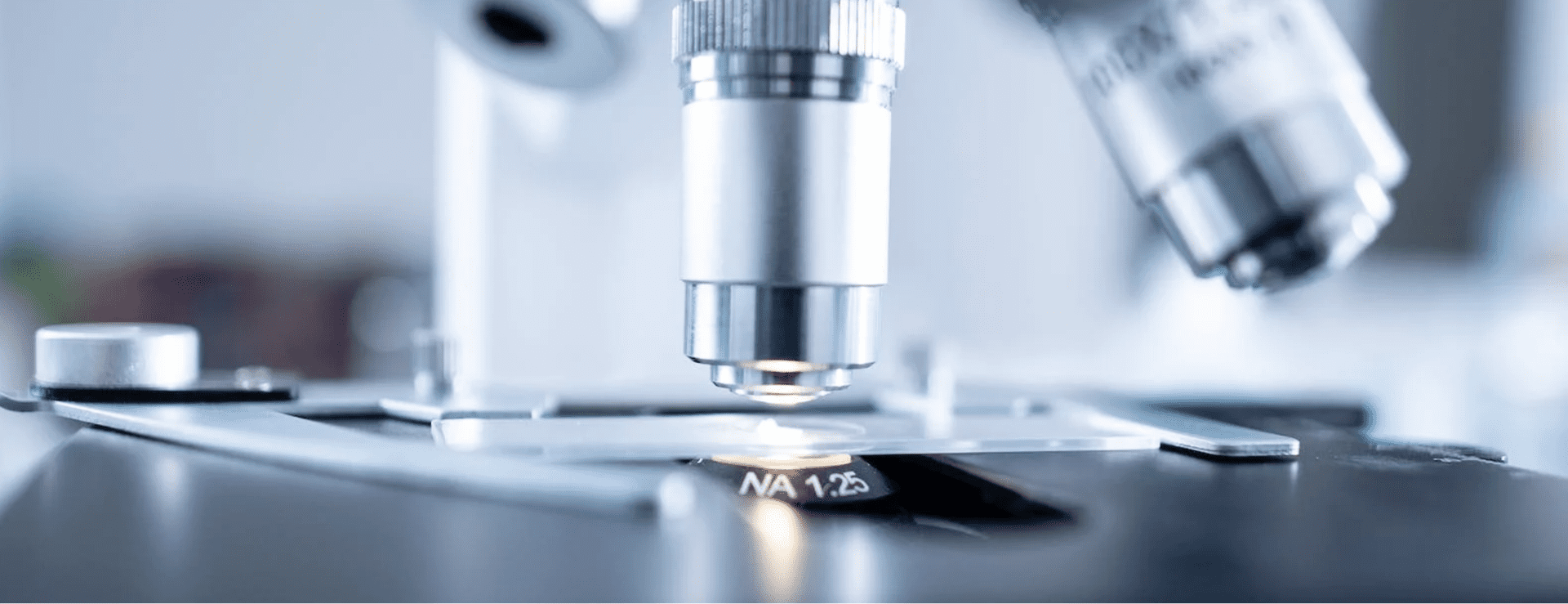Dry eye is a prevalent condition, particularly among individuals who are frequently exposed to computer screens or work in dry environments. While not typically severe, dry eye can cause discomfort, impair work performance, and lower quality of life. So, what is dry eye, and how can it be treated? Let’s explore this topic with Hoan My Gold Ky Dong in this article.
What is dry eye?
Dry eye occurs when the eyes do not produce enough tears or when the tears are of poor quality to adequately moisturise and protect the surface of the eyes. A healthy tear film consists of three primary layers: the lipid layer, the aqueous layer, and the mucin layer. These layers work together to protect the eyes, provide hydration, and nourish the cornea. However, when the balance between these layers is disrupted, the eyes become dry and more vulnerable to damage.

Dry eyes cause tired and blurred vision. Source: Internet
This status is more than just a lack of tears. Imbalance in the tear film can accelerate tear evaporation, leading to surface damage and prolonged inflammation.
Dry eye symptoms
Individuals with dry eye may experience the following symptoms:
- Burning or foreign body sensation in the eyes.
- Itching, irritation, redness, and stinging.
- Light sensitivity and discomfort when wearing contact lenses.
- Excessive tearing – a paradoxical response where the eyes produce excessive tears of poor quality.
- Blurred vision, especially after prolonged screen use.
- Temporary visual disturbances or eye fatigue.
Causes of dry eye
The causes of dry eye can be divided into two main categories:
- Insufficient tear production: Due to aging or medical conditions affecting tear glands.
Environmental factors such as wind, dry weather, or pollution, which can reduce natural tear production. Especially, staring at computer screens for prolonged periods reduces blink frequency, increasing tear evaporation.
- Poor tear quality: Imbalance in the tear film layers may lead to faster tear evaporation and inadequate lubrication.
Moreover, conditions such as Blepharitis , rosacea, or Sjögren’s syndrome can alsp increase the risk.

Stress is a cause that makes dry eyes worse. Source: Internet
Diagnosis
Diagnosis is typically performed by an ophthalmologist through clinical examination and specialised tests. Common diagnostic methods include:
- Clinical examination: Patients are asked about discomfort, burning sensations, blurred vision, or light sensitivity. Symptoms are assessed using standardized questionnaires.
- Schirmer’s test: This simple test measures tear production by placing a strip of filter paper under the lower eyelid. If tear production is less than 5.5 mm in 5 minutes, aqueous-deficient dry eye is likely.
- Tear break-up time (TBUT): Using fluorescein dye, the tear film is observed under cobalt blue light. A tear break-up time of less than 10 seconds indicates rapid tear evaporation, characteristic of evaporative dry eye.
- Tear osmolarity test: This evaluates the electrolyte concentration in tears to determine tear film quality.
- Fluorescein staining: This helps detect damage to the corneal or conjunctival surface, identifying inflammation or injury severity.
In severe cases, further testing may be required to rule out autoimmune conditions such as Sjögren’s syndrome, which often presents with dry eye and dry mouth symptoms.

Clinical examination is necessary to diagnose dry eye.
Combining multiple diagnostic methods helps doctors accurately determine the cause and type of dry eye that the patient has, thereby suggesting the most effective treatment method. This is especially important, because treatment does not stop at adding artificial tears but also needs to correct the factors that cause imbalance in the tear film.
Dry eye treatment
Common treatment approaches
The goal of dry eye treatment is to alleviate symptoms, enhance tear quality, and prevent complications. Treatments are tailored to the underlying cause and severity of the condition:
- Artificial tears: This is the most simple and common treatment. Patients should regular use of artificial tears, at least 3-4 times daily, to maintain eye hydration. For severe cases, gel or ointment-based artificial tears can be used at night.
- Warm compresses and eyelid hygiene: Applying a warm compress helps reduce eyelid inflammation and soften oils in the meibomian glands, improving tear quality. Daily eyelid hygiene is particularly effective for individuals with Blepharitis .
- Lifestyle adjustments: Following the “20-20-20” rule: take a break every 20 minutes, look at something 20 feet away for 20 seconds; and avoiding direct exposure to strong wind or air conditioning.
- Omega-3 fatty acid supplements: Omega-3 fatty acids have been shown to improve tear gland function and reduce inflammation. Sources include salmon, mackerel, flaxseed, and walnuts, or supplements.

A balanced diet helps improve vision health. Source: Internet
Advanced treatment options
For chronic or severe cases, advanced treatments may be required:
- Topical steroids: Used to reduce inflammation in severe cases under close supervision by an ophthalmologist due to potential side effects like increased intraocular pressure.
- Punctal plugs: Temporary or permanent closure of tear ducts helps retain tears on the ocular surface for longer durations.
- Intense pulsed light therapy (IPL): A novel technique to reduce eyelid inflammation and stimulate tear production. While still under investigation, it shows promising results.
- Thermal pulsation: This therapy uses heat and gentle pressure to unblock the meibomian glands, enhancing the lipid layer of the tear film.
Additionally, adjusting living and working environments plays a crucial role in managing dry eye. Patients are encouraged to use humidifiers at home or in the office to maintain adequate air humidity. Wearing protective glasses when outdoors can also help minimise the impact of wind, dust, and sunlight on the eyes.
While dry eye syndrome cannot be completely cured, timely and appropriate treatment can significantly improve quality of life, alleviate discomfort, and prevent serious complications. It is essential for patients to follow their doctor’s treatment recommendations and avoid self-medicating to minimise potential risks.
At Hoan My Gold Ky Dong Medical Centre, we are proud to offer comprehensive eye care services as part of the Hoan My Medical Corporation. With a team of highly skilled specialists, state-of-the-art equipment, and patient-centred care, we provide effective solutions for dry eye, corneal inflammation, and other ophthalmologic conditions.
Let us care for your eyes with expertise you can trust. Contact us today via our hotline at 0919 209 039 or register online here.
References:
—
HOAN MY GOLD KY DONG MEDICAL CENTRE
Hotline: 0919 209 039
Address: 27 Ky Dong, Ward 9, District 3, HCMC
Working Hours: Monday – Saturday | 7:30 – 17:00
Fanpage: https://www.facebook.com/hoanmygoldkd
Zalo: https://zalo.me/1806744790268771257

